Laser Ablation ICPMS Lab (ERB-5110)
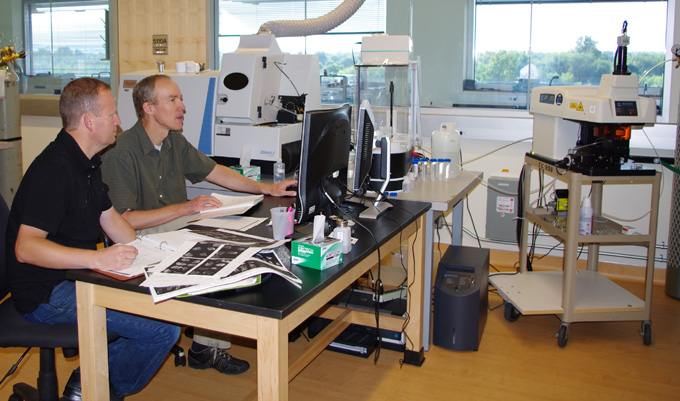
Our laser ablation inductively coupled plasma mass spectrometry (LA-ICPMS) facility is housed in a HEPA-filtered, climate controlled instrument laboratory just down the hall from the rest of IGL labs. Our facility is built around a ThermoElectron X-Series II quadrupole ICPMS and New Wave Research UP-213 Nd:YAG UV (213 nm) laser ablation system. Schmitz, Crowley and Olin have developed the in-house analytical protocols, standard materials and data reduction software for automated, simultaneous acquisition and real-time calibration of U-Th-Pb ages and a suite of HFSE and REE elements using the high sensitivity and unique properties of the interface (Xs cones), extraction lens and quadrupole analyzer of the X-Series II.
In This Section:
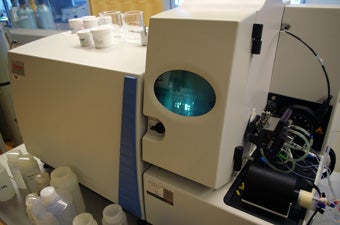
The plasma interface and analyzer of the X-Series II quadrupole, here shown running in solution mode with a Peltier-cooled spray chamber, microconcentric nebulizer, and ESI FAST autosampler.
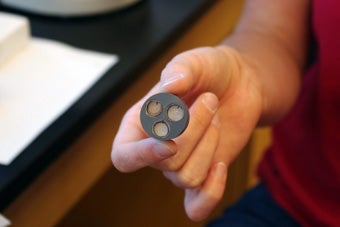
In order to compress hundreds of crystals from multiple samples into the standard laser cell of the UP-213, we cast a 1 cm i.d. glass collar into a standard 1″ round epoxy mounts. After polishing and imaging the 1 cm plug is extracted; 3 sample plugs can be fitted into a single 1″ adapting holder.
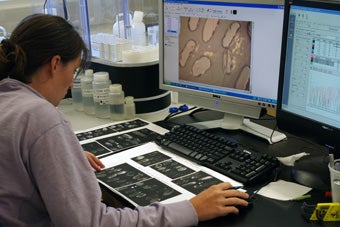
All laser spot analyses are guided by CL images. With excellent stage reproducibility and full ADL-script integration of the New Wave and Thermo Plasmalab software hundreds of sample spots can be pre-programmed for automated, unattended, round-the-clock analysis.
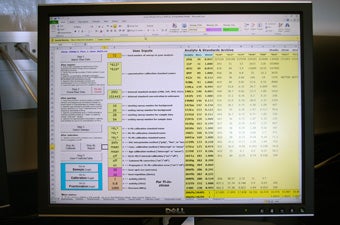
The home page of the in-house data reduction for LA-ICPMS. Twenty-nine analytes (Si, P, Ti, Y, Nb, Ta, Hf, REEs, Hg, Pb, Th, U) in up to 200 samples and standards make up a single experiment.
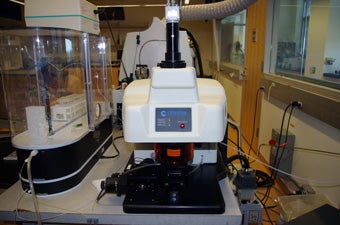
The solid-state UP-213 laserprobe offers extremely reliable ablation characteristics, reproducible stage alignment, and fully integrated software communication with the X-Series II ICPMS.
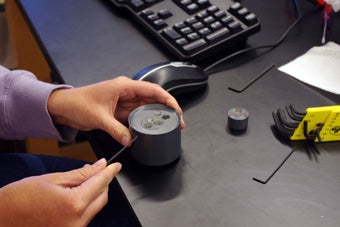
The 1″ sample insert is shown here being fitted into the laser cell. Zircon and glass standards are also fitted into the cell as 1 cm diameter plugs in line with the samples and along the axial flow channel of the laser cell.
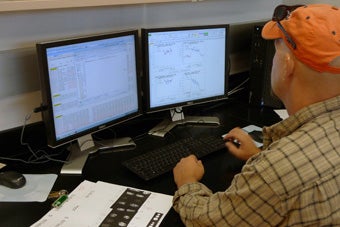
Output time-resolved signals from the Plasmalab software are uploaded into a VisualBasic macro-driven spreadsheet data reduction platform for signal analysis, concentration and isotope ratio calibration and age analysis and error propagation.
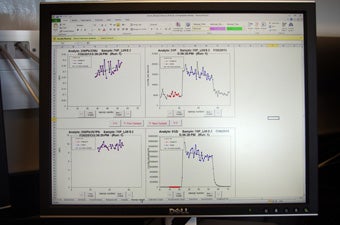
Time-resolved signals for multiple analytes and ratios can be rapidly examined in the data reduction software to identify and isolate inclusions, anomalous fractionation, or intra-crystalline age zoning.